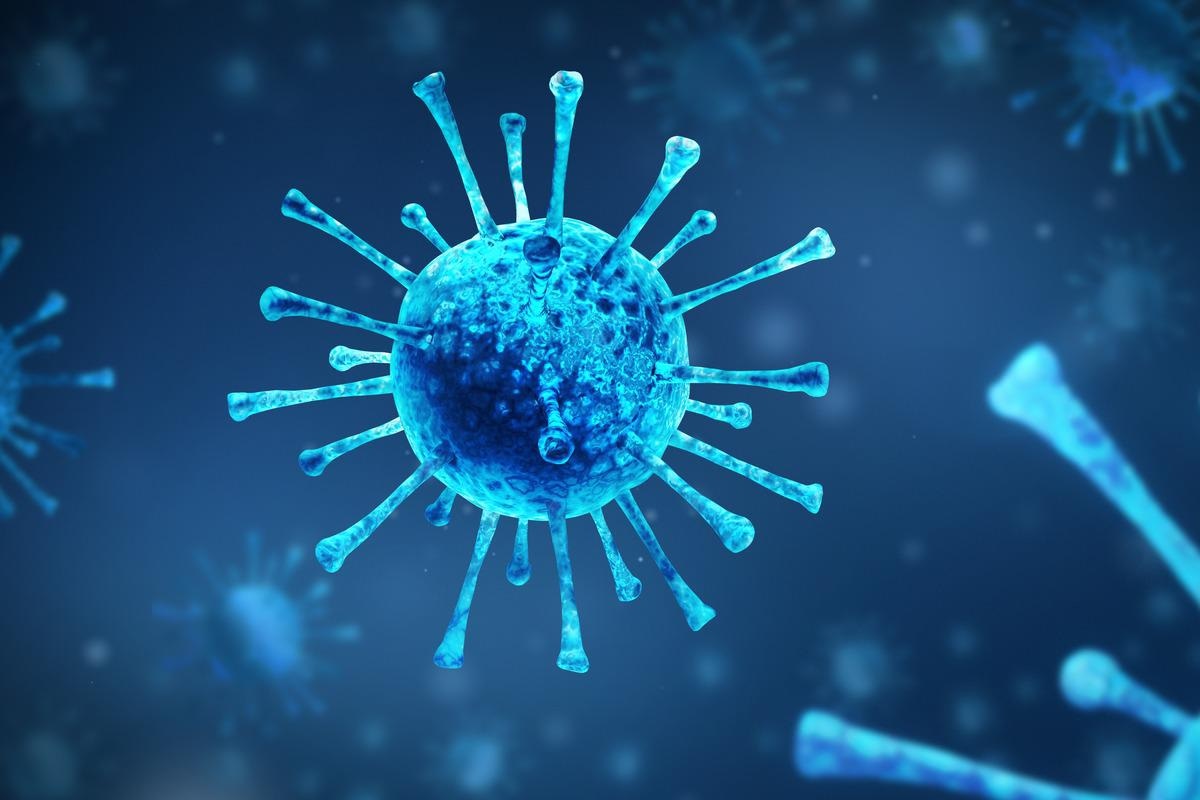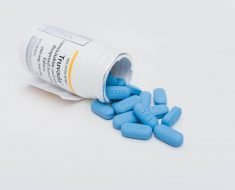The ongoing coronavirus disease 2019 (COVID-19) pandemic, caused by the severe acute respiratory syndrome coronavirus 2 (SARS-CoV-2), has not responded as hoped to the vaccines developed at “warp speed” within a year of its emergence, mostly because of the viral variants of concern that have shown remarkable ability to evade the host immune response, and to spread rapidly between people.
 Study: Peptide-antibody Fusions Engineered by Phage Display Exhibit Ultrapotent and Broad Neutralization of SARS-CoV-2 Variants. Image Credit: Starshaker/Shutterstock
Study: Peptide-antibody Fusions Engineered by Phage Display Exhibit Ultrapotent and Broad Neutralization of SARS-CoV-2 Variants. Image Credit: Starshaker/Shutterstock
This underlines the need for other effective treatments that can be used to treat infected individuals or avoid infection as post-exposure prophylaxis. A recent study described in the bioRxiv* preprint server reports greatly enhanced neutralizing efficacy for a fused peptide-antibody molecule against multiple variants of SARS-CoV-2, providing grounds for hope that therapeutic neutralizing antibodies (nAbs) may soon be available to protect against this modern plague.
Background
The virus surface is studded with the characteristic ‘crown’ of spike proteins that gives the family its name of coronavirus. The spike or S protein mediates viral-host receptor attachment and viral entry into the host cells. It exists as homotrimers, with about 25-100 such trimers on the surface of each viral particle.
The S protein has two subunits, the S1 and S2, that are responsible for receptor binding and membrane fusion, respectively. The S1 subunit possesses an N-terminal domain (NTD) with a succeeding receptor-binding domain (RBD), which mediates recognition and binding to the protein angiotensin-converting enzyme 2 (ACE2) to initiate infection.
Most neutralizing antibodies prevent this step, targeting the S1 subunit by binding to the RBD to stop its attachment to the receptor. Some nAbs, however, bind to neutralizing epitopes on the NTD itself. Recombinant technology has helped produce and engineer several natural nAbs into successful therapeutic antibodies. However, these must be used at high doses to possess adequate neutralizing capacity.
Also, they do not work well against many VOCs, which contain mutations in the RBD nAb epitopes that spare the ACE2-binding sites. Thus, the Beta VOC has been found to resist many vaccine-induced and natural nAbs.
To overcome these limitations of the bivalent nAbs that bind to the spike RBD, multivalent inhibitors are being explored, either using small modular antibody domains or non-antibody scaffolds. The multivalent nature of these molecules allows all the RBD monomers to be engaged simultaneously, enhancing the neutralizing potency.
Fusing additional antigen-binding fragments (Fab) of the antibody molecule to the SARS-CoV-2 immunoglobulin (Ig) G antibody produces a tetravalent antibody-like molecule that is more effective and powerful against VOCs than the bivalent antibodies.
Still another development involves small synthetic peptides that bind to the spike protein at sub-micromolar affinities. If these could bind to the spike protein, they could be used instead of the bulky Fab arms to increase the valency of IgGs and thus enhance their neutralizing potency –
tetravalent peptide-IgG fusions that combine the binding sites of potent nAbs with the small, modular binding sites of peptides.”
What did the study show?
The scientists here explored the ability of synthetic peptides to bind to the spike protein so as to extend the range of therapeutic nAbs against the virus. They examined phage-displayed peptide libraries to find 16-residue peptides that bound either the RBD or the NTD of the S1 subunit. They found four peptides, N1 and N2 that bind to the NTD, and R1 and R2 that bind to the RBD. All four probably bind to sites that overlap with nAb epitopes.
The researchers further identified several variants of N1 and R1 that could be synthesized chemically with 22 residues. These variants showed moderate to high apparent binding affinities, probably due to the ability to bind multiple spike trimers. This reflected their potential performance in the intended polyvalent neutralizing hybrid molecules that this experiment aimed to produce.
The scientists engineered these fusion molecules by attaching the peptides to the N-terminal end of an nAb with moderate spike-binding affinity. This yielded tetravalent peptide-IgG fusion molecules, which had very low off-rates relative to the natural IgG 15033. As a result, the affinities were much improved, as expected since the presence of a peptide ligand typically increases the binding energy and thus reduces the off-rate.
The highest affinity, with dissociation constants below the picomolar level, was found with the R1-fused and N1-fused IgGs. The affinity for the spike trimer appeared to be 100-fold higher than IgG 15033.
Next came cell-based infection assays, where the investigators tested the ability of an RBD-binding peptide (33-7HR1) to inhibit cell culture invasion by six SARS-CoV-2 variants (the B.1.1, the Alpha, Beta, B. 1.525 and the P.1, as well as the ancestral Wuhan variant). The same fusion molecule also inhibited viral entry by SARS-CoV-2 variants that were resistant to the same nAb in its natural bivalent format.
They found that even with a nAb of high affinity, the peptide enhanced the neutralizing potency by more than 100-fold. At low nanomolar range, it neutralized all six variants, while IgG 15033-7 failed to neutralize three VOCs, and showed much lower effectiveness against the other three.
Finally, they found that the already approved therapeutic nAb REGN10933 could be successfully fused to the R1 peptide. The resulting molecule, 10933HR1, out-performed the original antibody in neutralization of the D614G variant. Even more interestingly, it was able to neutralize the Beta variant with high potency, though REGN10933 was totally ineffective against this variant – the half-maximal inhibitory concentration, IC50, being <10 ng/mL, vs IC50 >1000 ng/mL, for the fusion molecule vs the original antibody.
Thus, it rescued neutralization against a resistant variant.
What are the implications?
Secondly, the spike’s trimeric structure helps design highly neutralizing antibodies that bind to three neutralizing epitopes per trimer. Earlier, it has been shown that neutralizing IgGs engage two RBDs on the spike trimer, which is improved to three by adding an Fab to the IgG, enhancing the neutralizing potency.
The current study replaces the large Fabs with small peptides to produce tetravalent fusion molecules from neutralizing IgGs, with much better affinities and potencies than the bivalent molecule. The peptide-IgG 33-7HR1 was a powerful inhibitor of resistant SARS-CoV-2 variants, and the R1 peptide rescued the already approved RGN10933-mediated neutralization of the Beta VOC which had completely resisted neutralization so far.
It seems that one of the R1 peptides could bind to the third RBD on the spike trimer, with two bound by the bivalent IgG Fabs. With the approved therapeutic nAb REGN10933, as against the natural IgG 15033-7, the neutralizing epitopes overlap, but the Fabs of the former would allow the one of the linked peptides in the fusion molecule 10933HR1 to bind the third RBD epitope.
The NTD-binding peptides, which may allow binding with other neutralizing epitopes, also greatly enhanced binding affinity of the fusion peptide-IgG. Interestingly, the NTD and RBD binding peptides show the highest binding affinity when fused to IgG light and heavy chains, respectively. Since these peptides bind to quite different epitopes, the possibility of fusing one of each kind to the IgG molecule should be explored for potential enhancements of neutralizing potency to still higher levels.
In addition to the COVID-19 pandemic, for which these fusion molecules may ultimately be developed as biologic drugs, such molecules are being tested in clinical trials in cancer patients. So far, they have shown good tissue penetration and pharmacokinetics, with high tolerability.
Taken together, our results establish peptide-IgG fusions as a powerful means for greatly enhancing the potency and coverage of next-generation biologics for the treatment of disease caused by SARS-CoV-2 and its variants.”
*Important notice
bioRxiv publishes preliminary scientific reports that are not peer-reviewed and, therefore, should not be regarded as conclusive, guide clinical practice/health-related behavior, or treated as established information.
- Labriola, J. M. et al. (2021). Peptide-antibody Fusions Engineered by Phage Display Exhibit Ultrapotent and Broad Neutralization of SARS-CoV-2 Variants. bioRxiv preprint. doi: https://doi.org/10.1101/2021.11.29.470362. https://www.biorxiv.org/content/10.1101/2021.11.29.470362v1
Posted in: Medical Science News | Medical Research News | Disease/Infection News | Healthcare News
Tags: ACE2, Angiotensin, Angiotensin-Converting Enzyme 2, Antibodies, Antibody, Antigen, binding affinity, Cancer, Cell, Cell Culture, Coronavirus, Coronavirus Disease COVID-19, Drugs, Efficacy, Enzyme, Immune Response, Immunoglobulin, Ligand, Membrane, Molecule, Pandemic, Peptides, Pharmacokinetics, Plague, Prophylaxis, Protein, Receptor, Respiratory, SARS, SARS-CoV-2, Severe Acute Respiratory, Severe Acute Respiratory Syndrome, Spike Protein, Syndrome, Vaccine, Virus

Written by
Dr. Liji Thomas
Dr. Liji Thomas is an OB-GYN, who graduated from the Government Medical College, University of Calicut, Kerala, in 2001. Liji practiced as a full-time consultant in obstetrics/gynecology in a private hospital for a few years following her graduation. She has counseled hundreds of patients facing issues from pregnancy-related problems and infertility, and has been in charge of over 2,000 deliveries, striving always to achieve a normal delivery rather than operative.
Source: Read Full Article





